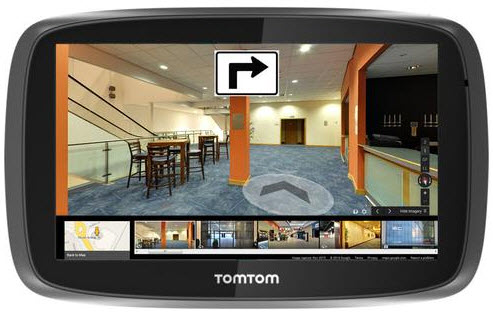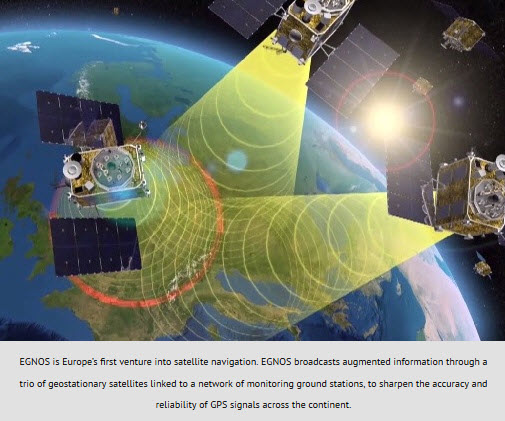GNSS vulnerability can be solved by using more GNSS
23 September 2014

Recent events with GLONASS and with GPS in Australia demonstrated that navigation systems are vulnerable to software problems or glitches. The threat of jamming and spoofing are relevant for GNSS, where the power of the broadcast signals is comparatively weak (think of spotting a 40W light bulb from a few kilometres) and therefore susceptible to RF interference.
Whilst eLORAN, the low frequency terrestrial navigation system based on a number of transmission stations, is likely to have a role serving as a GNSS back up system for the maritime industry, improvements to GNSS augmentation (or dead reckoning) using improved low cost inertial devices will also help to improve the performance of modern navigation systems in the future. For most users a toughened GNSS solution will probably provide the required levels of integrity and availability, but in some safety critical applications where it does not, a back-up system such as eLORAN will provide the additional assurance required.
However, much can be done to improve the robustness of GNSS receivers to interference threats and spoofing attacks. GPS has been very reliable since its introduction and introducing new GPS frequencies such as L2C and L5 with the Galileo, GLONASS and Beidou satellite constellations, means that more robust receiver architectures will be developed that use frequency and constellation diversity to provide enhanced levels of protection.
GNSS is essentially a position-fixing technology and not a complete navigation system. So part of the discussion on GNSS vulnerabilities should be centered on how GNSS technology has become ubiquitous and GNSS receivers are often regarded as being a complete navigation system. GNSS can provide an almost continuous series of fixes, so other building blocks of a navigation system (such as a dead reckoning component for calculating position and time if no fix is available) have been somewhat neglected.
As a location fixing technology, GNSSs are exceptionally reliable and accurate, but it is vulnerable to higher powered RF interference and to faked or spoofed GNSS signals. Instances of these have grown in recent years, so there is a greater need to ‘harden’ GNSS receivers against likely threats so navigation systems can obtain accurate GNSS fixes with the highest possible availability.
Whilst eLORAN is likely have an important place serving as a GNSS back up system for the maritime industry, improvements to GNSS augmentation (or dead reckoning) using improved low cost inertial devices will also help to improve the performance of modern navigation systems. For most users a toughened GNSS solution will most probably provide the required levels of integrity and availability but in some select safety critical applications where it does not, a back-up system such as e-LORAN will provide the additional assurance required.
A good test regime is needed to evaluate GNSS receiver performance, given the many subtleties and difficulties that a modern navigator faces. Simulating GNSS signals and RF interference, or spoofing, is a proven way of investigating a new design for any vulnerabilities and eliminating them before the product is reaches the market.
GNSS receiver designers must also test the software of their products, to avoid reputational damage from events like the recent GPS receiver malfunctions in Australia caused by a GPS satellite health set to “unhealthy”, or the recent problems with incorrect data uploaded to GLONASS satellites.
Source
Whilst eLORAN, the low frequency terrestrial navigation system based on a number of transmission stations, is likely to have a role serving as a GNSS back up system for the maritime industry, improvements to GNSS augmentation (or dead reckoning) using improved low cost inertial devices will also help to improve the performance of modern navigation systems in the future. For most users a toughened GNSS solution will probably provide the required levels of integrity and availability, but in some safety critical applications where it does not, a back-up system such as eLORAN will provide the additional assurance required.
However, much can be done to improve the robustness of GNSS receivers to interference threats and spoofing attacks. GPS has been very reliable since its introduction and introducing new GPS frequencies such as L2C and L5 with the Galileo, GLONASS and Beidou satellite constellations, means that more robust receiver architectures will be developed that use frequency and constellation diversity to provide enhanced levels of protection.
GNSS is essentially a position-fixing technology and not a complete navigation system. So part of the discussion on GNSS vulnerabilities should be centered on how GNSS technology has become ubiquitous and GNSS receivers are often regarded as being a complete navigation system. GNSS can provide an almost continuous series of fixes, so other building blocks of a navigation system (such as a dead reckoning component for calculating position and time if no fix is available) have been somewhat neglected.
As a location fixing technology, GNSSs are exceptionally reliable and accurate, but it is vulnerable to higher powered RF interference and to faked or spoofed GNSS signals. Instances of these have grown in recent years, so there is a greater need to ‘harden’ GNSS receivers against likely threats so navigation systems can obtain accurate GNSS fixes with the highest possible availability.
Whilst eLORAN is likely have an important place serving as a GNSS back up system for the maritime industry, improvements to GNSS augmentation (or dead reckoning) using improved low cost inertial devices will also help to improve the performance of modern navigation systems. For most users a toughened GNSS solution will most probably provide the required levels of integrity and availability but in some select safety critical applications where it does not, a back-up system such as e-LORAN will provide the additional assurance required.
A good test regime is needed to evaluate GNSS receiver performance, given the many subtleties and difficulties that a modern navigator faces. Simulating GNSS signals and RF interference, or spoofing, is a proven way of investigating a new design for any vulnerabilities and eliminating them before the product is reaches the market.
GNSS receiver designers must also test the software of their products, to avoid reputational damage from events like the recent GPS receiver malfunctions in Australia caused by a GPS satellite health set to “unhealthy”, or the recent problems with incorrect data uploaded to GLONASS satellites.
Source





